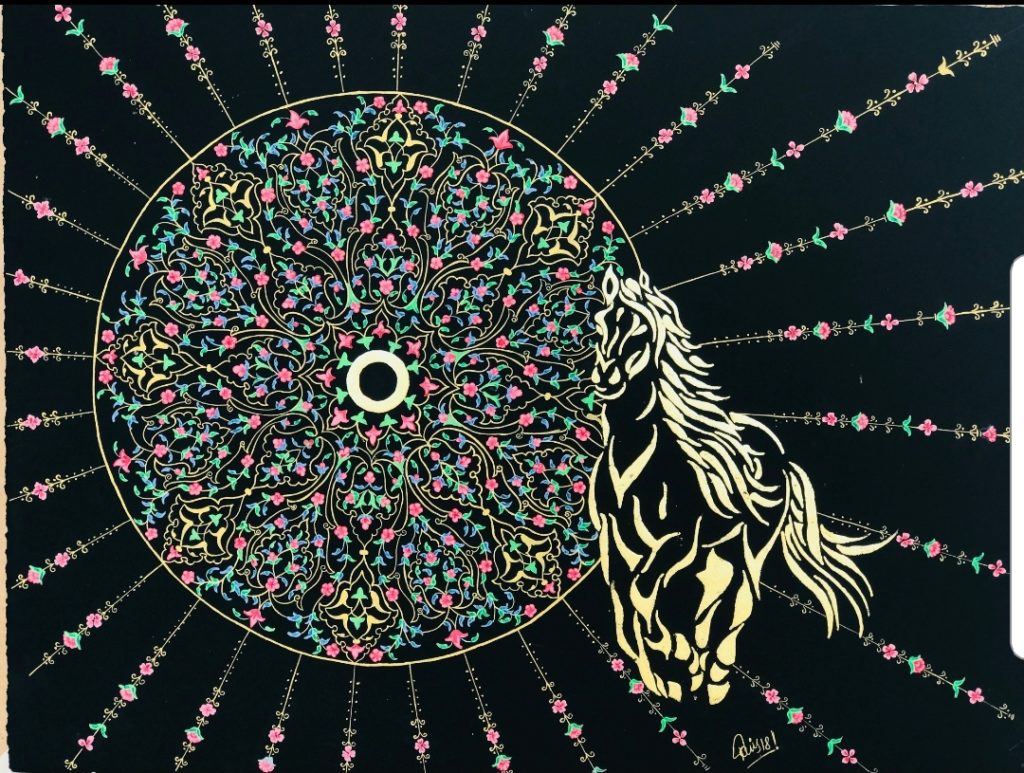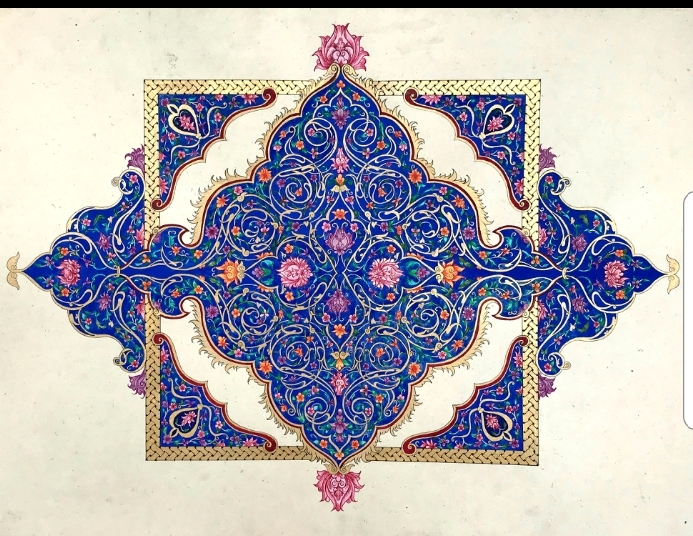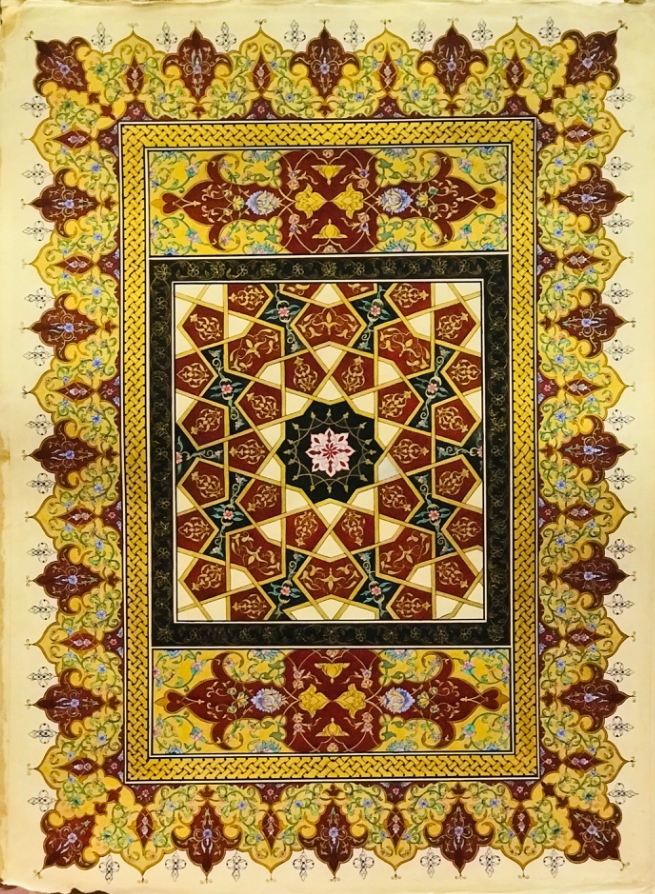Tania Nasir . An interior designer by degree. Have been passionate about painting since hi school. Have done a diploma in miniature painting and being taught by proficient teachers in the same genre. “Art is a form of mediation that takes your imagination where reality cannot. It makes one see the fifth side of a square and read between the lines. Colours make your soul breathe its own style. Art speaks where the words are unable to explain”. This is my way of expression of art.
.
My project is geometry of islamic world used in different regions in different islamic eras. Islamic art is divided into three form. One is geometry i.e. staright lines and compass. Second is biomorph or curved lines. Third is calligraphy Quran verses. Geometry is an ancient form of expression and is a way of getting perfection in forming curves as well named as biomorphic design in islamic art. And top teir is calligraphy which is God’s lines used in Holy book of Quran. All of the above three are used widely in art of islamic pattern. It brings you closer to nature where the symmetry tells you how it begins and how it tessalte.
.
To many, the silent theology of Islamic art can speak more profoundly and clearly than the most dazzling treatise, and its beauty can be more evident and persuasive than the strongest argument. Islamic arts play an important role by bringing the basic elements of our surroundings (such as light, shade, space, time, color, sound, scent, and silence) back to their geometric, archetypal realities, which are more easily integrated into the divine unity—one reason Islamic civilization and its arts are so focused on geometry. In other words, Islamic arts make things metaphysically transparent; they allow us to perceive the light of God in and through them, as if they were stained-glass windows. It is through imagination (khayāl) that the Islamic arts render the invisible divine visible, and it is through imagination that we can perceive the mysteries of transcendent divine unity immanent in these sensory forms.
.
While difficult to define in concrete, formal terms, Islamic art is recognized easily, especially by those familiar with other dimensions of the Islamic tradition. Whether visual or sonoral, the Islamic arts project unity (tawĥīd), which manifests as symmetry, harmony, and rhythm—the imprint of unity on multiplicity. The Islamic arts do not mimic or imitate the outward forms of things but present their inner, archetypal realities, hence the emphasis on number (geometry) and letters (calligraphy), which are the basic building blocks of space/time and language.
.

.

.




